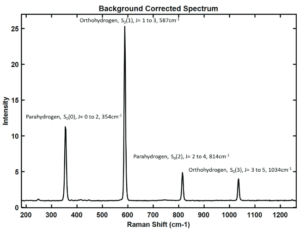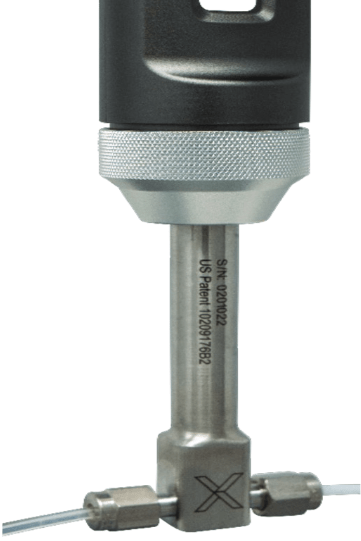Hydrogen plays a key role in the future of energy due to its potential for decarbonization. In order to be used safely and efficiently, it is important to store and transport it in a liquid state, which requires temperatures around 20 K. Under these conditions, the conversion of ortho- and para-hydrogen takes place, which is essential for minimizing energy losses and preventing hydrogen evaporation during storage.
At room temperature, orthohydrogen makes up approximately 75% of the hydrogen molecule mixture, while parahydrogen makes up the remaining 25%. This ratio changes with decreasing temperature, with almost 100% of the hydrogen in the paraform, which is thermodynamically more stable, at 20 K. However, the process of converting orthohydrogen to parahydrogen is exergonic and generates a large amount of heat, which can cause the stored liquid hydrogen to evaporate.
Raman spectroscopy is an ideal method to monitor this process. It provides fast and accurate information on the ratio of ortho- and para-hydrogen, which is crucial for optimizing industrial processes such as liquid hydrogen production.

Advantages of Raman spectroscopy
Raman spectroscopy is becoming increasingly popular in industrial applications due to its speed and ease of implementation, and in terms of hydrogen monitoring, it provides the following advantages in particular:
- Fast measurements: Thanks to short response times, processes can be monitored in real time.
- Robustness under extreme conditions: Raman spectroscopy works even in cryogenic conditions, making it ideal for measuring liquid hydrogen at low temperatures.
Practical use
In the industrial production of liquid hydrogen, catalysts are used to accelerate the conversion of orthohydrogen to parahydrogen. A slow conversion process could lead to overheating and subsequent evaporation of hydrogen. By using Raman spectroscopy, it is possible to monitor the efficiency of this catalytic reaction in real time, which allows increasing the efficiency of the entire process.
The use of in-line Raman spectroscopy allows continuous monitoring of hydrogen composition and isomer conversion rates, ensuring the stability and safety of stored hydrogen. You can learn more here.

